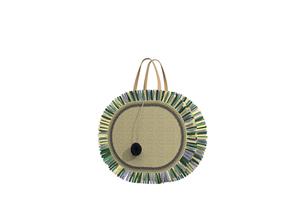Why Crochet seems Expensive?
Why Crochet seems Expensive?
In the world of textile arts, crochet holds a distinct position, celebrated for its intricate patterns and the warmth it imbands in every creation. The question of why hand crochet is expensive often surfaces, pointing towards a deep appreciation for the time and skill invested in each piece. Crochet, beyond being a hobby for many, stands as a testament to the dedication and patience required to transform yarn into art. Each loop and stitch carries a story, a blend of tradition and personal expression that elevates it beyond mere functionality.
This article delves into the various facets that contribute to the cost and value of hand crochet items, providing insights into material costs,the extensive time and labor involved, and the exceptional level of skill and craftsmanship that crochet entails. Additionally, it explores how market factors influence pricing and perceptions. Through an examination of these aspects, readers will gain a comprehensive understanding of the intricate dynamics behind crochet craftsmanship and the justification for its pricing, thus shedding light on the genuine worth of hand crocheted creations.
Material Costs
Calculating the cost of materials is crucial for understanding the pricing of hand crochet items. One method is by adding the cost of materials, time spent, and the crafter's experience. For example, a baby blanket typically requires 900–1200m of yarn, costing approximately £20, which is an underestimate. Additionally, if the blanket undergoes processes like washing or packaging, a reasonable figure should be added for these services.
Another approach involves weighing the yarn used to determine its cost accurately. For instance, if a Bernat blanket skein costs $11.99 and weighs 300 grams, the cost per gram is approximately $0.04. This figure is multiplied by the amount of yarn used to calculate the total material cost for the project. Similarly, for other materials like safety eyes, the cost per unit is calculated by dividing the price by the quantity in the pack.
It is also essential to monitor the price per gram of yarn to maintain cost-effectiveness. For instance, purchasing yarn during sales can significantly reduce costs, as demonstrated by a scenario where the price per gram could drop from 6 cents to 3 cents, effectively halving the cost. This strategy helps in keeping the overall material costs low, ensuring that the final product is priced competitively while still allowing for a reasonable profit margin.
Time and Labor
The time and labor involved in crochet are substantial, often underestimated by those unfamiliar with the craft. For contract crocheters, attention to detail and finishing skills are paramount, as they are typically paid to produce finished pieces for various clients, including yarn companies and retail stores. However, this meticulous work is not usually viable as a full-time job due to the intensive time commitment required.
To accurately estimate the time required for a crochet project, tools like the "How long does it take to crochet that" calculator are invaluable. This tool considers various inputs such as the total number of skeins and the length and weight per skein. Crocheters can input the time already spent on a part of the project and the calculator will estimate the total minutes needed to complete it.
Moreover, the Love Crafts project calculator offers a fun and practical way to estimate project duration. This feature allows crocheters to select their skill level, available weekly crochet hours, and a specific project from a dropdown menu to calculate the total time required. This tool is particularly useful for planning projects like Christmas gifts, ensuring they are completed in a timely manner.
Skill and Craftsmanship
Understanding crochet skill levels involves recognizing the spectrum of stitches and techniques defined by the Craft Yarn Council, which are based on insights from industry leaders. These levels range from Level 1, suitable for beginners using basic stitches with minimal shaping, to Level 4, which is reserved for experienced crocheters working with intricate stitch patterns and detailed finishing.
Crochet skill acquisition is not merely about following patterns but about mastering the ability to execute knowledge into tangible skills. This journey begins with fundamental techniques and progresses through various stitch combinations and project types, ultimately defining one's expertise in the craft.
Moreover, the challenge in crochet is often communicated through pattern difficulty ratings, which can be subjective and vary from one crocheter to another. Therefore, it's crucial for crocheters to understand what each project rating entails and decide for themselves if a pattern aligns with their skills or presents a learning opportunity.
The evolution of crochet from a traditional craft to a dynamic art form is also significant. Modern crocheters are not only preserving the heritage but are also innovating with new patterns and styles, pushing the boundaries of what can be achieved with crochet. This revolution in crochet emphasizes the craft's adaptability and the continuous growth in skills that it demands from its practitioners.
Market Factors
In the dynamic realm of crochet, market factors play a crucial role in determining the pricing and sales of handcrafted items. The pricing strategy needs to consider the local economic conditions, as the demand and acceptable price points vary significantly with geography. Additionally, the costs of materials, often influenced by global economic trends like inflation, can significantly impact the final price of crochet goods. For instance, the rising costs of yarn and other essentials necessitate a pricing model that covers these expenses while ensuring a profit margin that sustains the business.
The competitive landscape is also shaped by the presence of fast fashion, which often undercuts prices of handmade items, making it challenging for crochet artisans to compete without compromising on quality or ethical standards. This competition forces many to reconsider their business models or find niche markets where the value of handcrafted items is better recognized.
Moreover, the growing interest in sustainable and ethically produced goods presents an opportunity for crochet artisans. By highlighting the craftsmanship and the sustainable practices involved in creating each piece, they can differentiate themselves from mass-produced alternatives. This strategy not only caters to a growing segment of conscious consumers but also adds intrinsic value to the products, justifying higher price points necessary for the viability of artisanal crochet ventures.
Conclusion
Through this discussion, it is evident that crochet is more than just a craft; it's a meticulous art form that requires significant skill, patience, and creativity. The various aspects explored, from the intricacies of material costs and labor to the levels of skill and craftsmanship, underscore the justification behind the pricing of hand-crocheted items. This article has provided a comprehensive insight into the factors contributing to crochet's value, offering an appreciation for the dedication behind each piece and the broader implications on the market.
In reflecting on the broader significance, the conversation around crochet touches on themes of sustainability, ethical production, and the preservation of traditional arts in the modern world. As we consider the future of crochet within the textile arts and beyond, it beckons a call for further appreciation, support, and recognition of the craft. This understanding not only cultivates a deeper appreciation among enthusiasts but also emphasizes the importance of crochet in the realm of cultural preservation and innovation.
FAQs
1. What exactly is crochet?
Crochet is a craft that originated in the 19th century, evolving from a type of chain-stitch embroidery. Unlike embroidery that uses a needle, crochet involves using a hook to create a fabric from looped and interlinked chains of thread, without the need for a foundation material.
2. What spiritual benefits does crocheting offer?
Crocheting, like knitting and other yarn crafts, has a unique way of engaging the mind that helps distract from stressful thoughts, promoting a sense of peace. This focused activity can have effects similar to those experienced during prayer, enhancing overall mental health and well-being.
3. Is crocheting considered a talent or a skill?
Crocheting is primarily a skill that can be developed and perfected over time for both personal enjoyment and professional use. It involves visual-spatial and bodily-kinesthetic intelligences and falls within the realm of creative skills.
4. Why does crocheting bring happiness?
The act of crocheting can induce a calming effect, helping to alleviate anxiety and stress. The simple, repetitive motions involved in crocheting not only soothe the mind but can also serve as an effective method to unwind before bedtime, facilitating better sleep.




